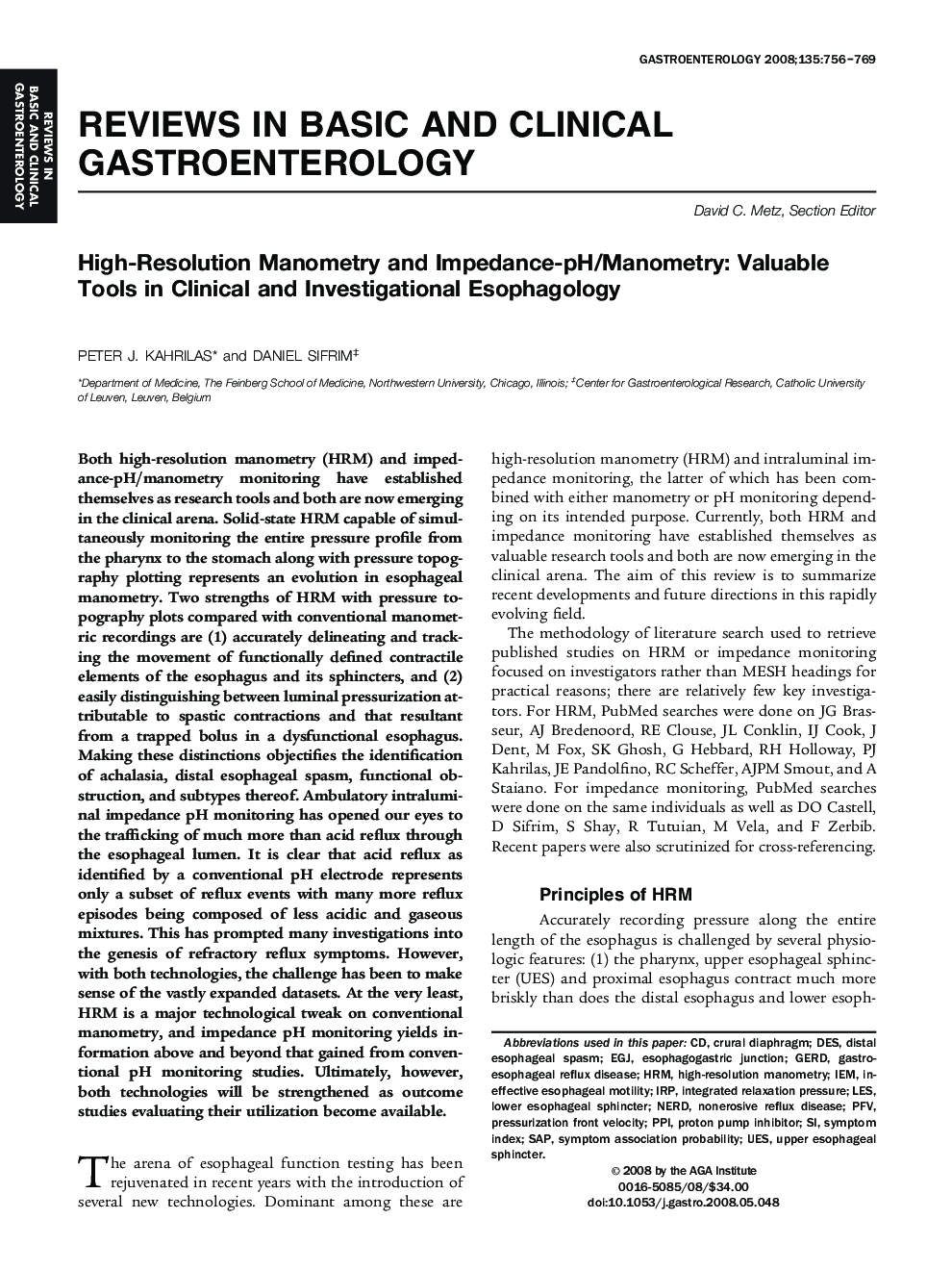| Article ID | Journal | Published Year | Pages | File Type |
|---|---|---|---|---|
| 3298512 | Gastroenterology | 2008 | 14 Pages |
Both high-resolution manometry (HRM) and impedance-pH/manometry monitoring have established themselves as research tools and both are now emerging in the clinical arena. Solid-state HRM capable of simultaneously monitoring the entire pressure profile from the pharynx to the stomach along with pressure topography plotting represents an evolution in esophageal manometry. Two strengths of HRM with pressure topography plots compared with conventional manometric recordings are (1) accurately delineating and tracking the movement of functionally defined contractile elements of the esophagus and its sphincters, and (2) easily distinguishing between luminal pressurization attributable to spastic contractions and that resultant from a trapped bolus in a dysfunctional esophagus. Making these distinctions objectifies the identification of achalasia, distal esophageal spasm, functional obstruction, and subtypes thereof. Ambulatory intraluminal impedance pH monitoring has opened our eyes to the trafficking of much more than acid reflux through the esophageal lumen. It is clear that acid reflux as identified by a conventional pH electrode represents only a subset of reflux events with many more reflux episodes being composed of less acidic and gaseous mixtures. This has prompted many investigations into the genesis of refractory reflux symptoms. However, with both technologies, the challenge has been to make sense of the vastly expanded datasets. At the very least, HRM is a major technological tweak on conventional manometry, and impedance pH monitoring yields information above and beyond that gained from conventional pH monitoring studies. Ultimately, however, both technologies will be strengthened as outcome studies evaluating their utilization become available.
